
 Flash News
Flash News
Berisha congratulates Trump on US independence: Celebration that comes after victory over the Ayatollahs' regime
Weapons trafficked from Kosovo to Albania, two arrested, 8 pistols seized
When honor 'kills' more than violence, Lediona Braho for Politiko: Incest, a silent problem in Albanian society
Fire continues at Elbasan incinerator, toxic smoke endangers citizens' health
The USA celebrates its 249th anniversary of Independence
Albania, the 7th most polluted in Europe, rates three times above the WHO limit
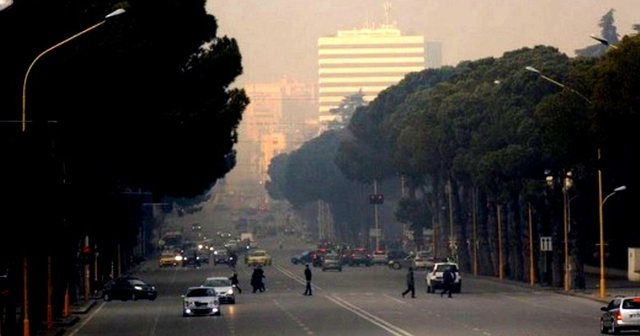
Air pollution is the biggest environmental threat to human health, causing one in nine deaths worldwide. According to the World Health Organization (WHO), air pollution is responsible for about 7 million premature deaths worldwide each year. Exposure to PM2.5 air pollution worsens many health conditions, including but not limited to asthma, cancer, stroke and lung disease.
In addition, exposure to high levels of fine particles can impair cognitive development in children, leading to mental health problems and complications of existing diseases, including diabetes, the 2023 Air Quality report said. compiled by IQAir, a Swiss organization that processes data collected from 30,000 monitoring stations in 134 countries around the world.
The study looked specifically at fine particulate matter, or PM2.5, which is the smallest but also most dangerous pollutant. Only 9% of the 7,812 cities surveyed met the WHO standard, which states that annual average PM2.5 levels should not exceed 5 micrograms per cubic meter. These include Australia, Estonia, Finland, Grenada, Iceland, Mauritius and New Zealand.
"We see that in every part of our lives air pollution has an impact," said IQAir Global CEO Frank Hammes.
How is Albania positioned?
The air we breathe every day is getting worse year by year, according to the report. Our country ranks seventh in Europe for the high level of air pollution, while it ranks 60th in the world. The average annual concentration of PM2.5 is 16.7, exceeding three times the limit set by WHO. Even the countries of the region are not presented better, unfortunately. Bosnia and Herzegovina, North Macedonia, Montenegro and Serbia lead the list as the most polluted countries in Europe. Kosovo is ranked 17th. In the ranking of the capitals for the level of air pollution, Tirana is in the 51st place in the world, after Skopje and Podgorica, respectively in the 30th and 36th places. The European region includes 2006 cities from 43 countries.
Despite a slight increase in annual average PM2.5 levels, Iceland remains the least polluted country with an average concentration of 4 µg/m3. Bosnia and Herzegovina saw an 18% decrease in PM2.5 levels in 2023 compared to 2022, but remains the most polluted country in Europe, reporting an average annual concentration of 27.5 µg/m3. In a recurring trend from 2022, Iceland, Estonia and Finland are the only countries in the region to reach the annual WHO PM2.5 guideline level. Croatia showed the most progress in 2023 in reducing PM2.5 levels with the annual average falling by more than 40% compared to 2022.
Montenegro experienced the largest absolute increase in PM2.5 concentrations with annual levels increasing by more than 4 µg/m3 in 2023 for an annual average of 20 µg/m3. Annual average PM2.5 levels decreased in 2023 for 36 countries in the region, increased for six countries, and remained constant for one country. In 2023, 7% (135) of cities in the region reached the WHO annual PM2.5 guideline of 5 µg/m3, including every city in Iceland.
Globally Begusarai, a city of half a million people in the northern Indian state of Bihar, was the most polluted city in the world last year with an annual average PM2.5 concentration of 118.9 – 23 times the WHO guidelines . It was followed in the IQAir ranking by the Indian cities of Guwahati, Assam; Delhi; and Mullanpur, Punjab./ Monitor
Latest news


Who will replace Ilir Meta and take over the leadership of the PL?
2025-07-04 13:50:36
Berisha: Dismissal of directors in Vlora, another act of 'scapegoats'
2025-07-04 13:41:46




Librazhd/ In a serious psychological state, the young man consumes pesticides
2025-07-04 13:05:07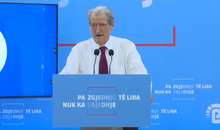


Weapons trafficked from Kosovo to Albania, two arrested, 8 pistols seized
2025-07-04 12:33:28
Konsumimi i tepërt i çokollatës, ja cilat janë dëmet që shkakton në organizëm
2025-07-04 12:23:35

Fires in the country, 21 fires in the last 24 hours, 4 still active
2025-07-04 12:00:19
WB calls for debt transparency: Albania to publish details of every loan
2025-07-04 11:50:05
Changes in the State Police, new names expected to lead 5 police stations
2025-07-04 11:40:06

The race for the head of the BKH, the third phase on July 11
2025-07-04 11:20:23

Toxic phrases that show your relationship is in trouble
2025-07-04 11:00:10

2 brothers arrested in Roskovec, cultivating narcotic plants
2025-07-04 10:38:08

Celebrating his 61st birthday today, Rama is surprised at the pink headquarters
2025-07-04 10:21:46
Suspended from duty 4 days ago, Jonaid Myzyri appears before the Criminal Court
2025-07-04 10:16:27
Heat wave/ 5 deaths in Italy from high temperatures
2025-07-04 10:07:55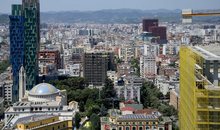
Economy slows, telecommunications joins agriculture and industry in recession
2025-07-04 09:58:13

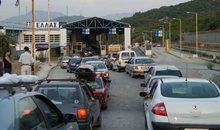
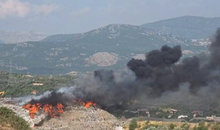
Fire continues at Elbasan incinerator, toxic smoke endangers citizens' health
2025-07-04 09:19:06
The USA celebrates its 249th anniversary of Independence
2025-07-04 09:09:22

After Rama's ultimatum, all directors of the Vlora municipality resign
2025-07-04 08:46:30
Russia, the first country in the world to recognize the Taliban government
2025-07-04 08:37:20
10 facts about the 10th legislature!
2025-07-04 08:21:35
Foreign exchange/ How much foreign currencies are bought and sold today
2025-07-04 08:01:50

Weather forecast for today
2025-07-04 07:36:43
"Don't be afraid", here's what the stars have predicted for each sign
2025-07-04 07:21:48
Morning Post/ In 2 lines: What mattered yesterday in Albania
2025-07-04 07:03:17
Bushati: Zegjineja, a book piloted by Rama
2025-07-03 22:57:30








Greece imposes fee to visit Santorini, how many euros tourists must pay
2025-07-03 20:50:37
Don't make fun of the highlanders, Elisa!
2025-07-03 20:43:43
Gunfire in Durres, a 30-year-old man is injured
2025-07-03 20:30:52

The recount in Fier cast doubt on the integrity of the vote
2025-07-03 20:09:03


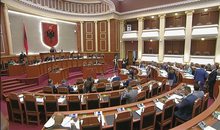

Heatwave has left at least 9 dead this week in Europe
2025-07-03 19:00:01
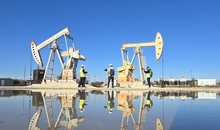
Oil exploitation, Bankers accused of 20-year fraud scheme
2025-07-03 18:33:52
Three drinks that make you sweat less in the summer
2025-07-03 18:19:35
What we know so far about the deaths of Diogo Jota and his brother André Silva
2025-07-03 18:01:56



Another heat wave is expected to grip Europe
2025-07-03 17:10:58

Accident on Arbri Street, car goes off the road, two injured
2025-07-03 16:45:27

Accused of two murders, England says "NO" to Ilirjan Zeqaj's extradition
2025-07-03 16:25:05




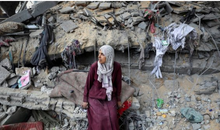
Gaza rescue teams: Israeli forces killed 25 people, 12 in shelters
2025-07-03 15:08:43
Diddy's trial ends, producer denied bail
2025-07-03 15:02:41

Agricultural production costs are rising rapidly, 4.8% in 2024
2025-07-03 14:55:13
Warning signs of poor blood circulation
2025-07-03 14:49:47
Croatia recommends its citizens not to travel to Serbia
2025-07-03 14:31:19
Berisha: Albania is the blackest stain in Europe for the export of emigrants
2025-07-03 14:20:19

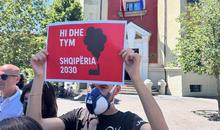
'Ministry of Smoke': Activists Blame Government for Wasteland Fires
2025-07-03 13:59:09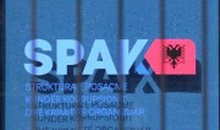

AFF message of condolences for the tragic loss of Diogo Jota and his brother
2025-07-03 13:41:36
Five healthy foods you should add to your diet
2025-07-03 13:30:19






A unique summer season, full of rhythm and rewards for Credins bank customers!
2025-07-03 12:12:20

Fire situation in the country, 29 fires reported in 24 hours
2025-07-03 12:00:04
